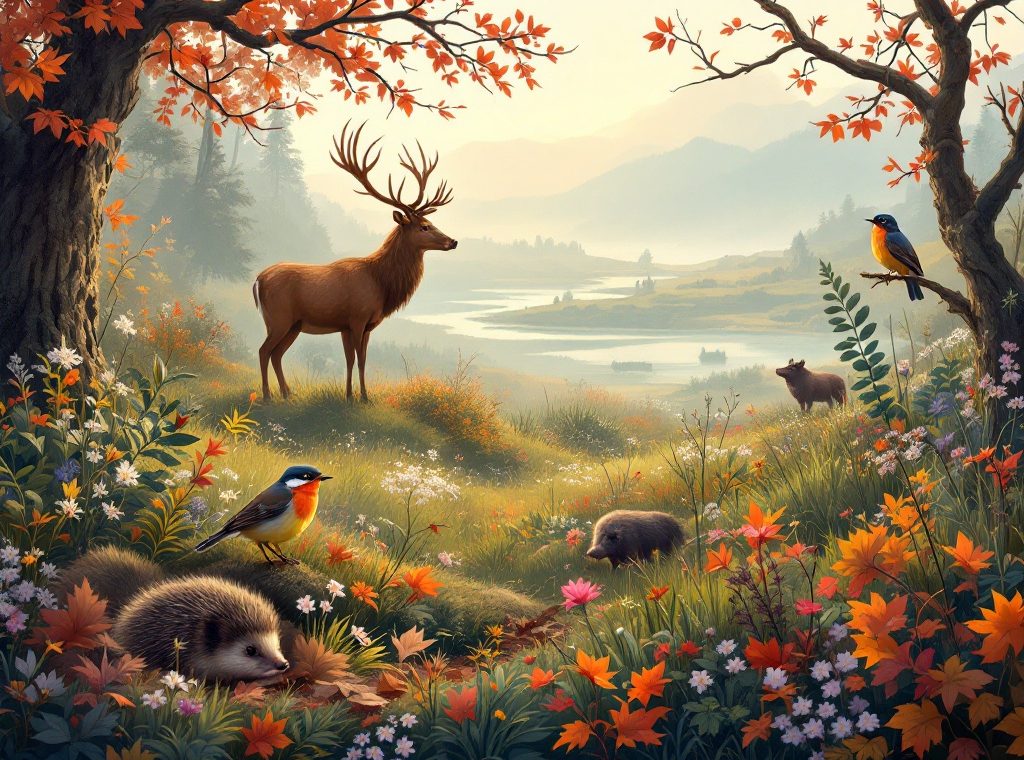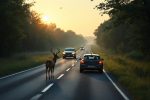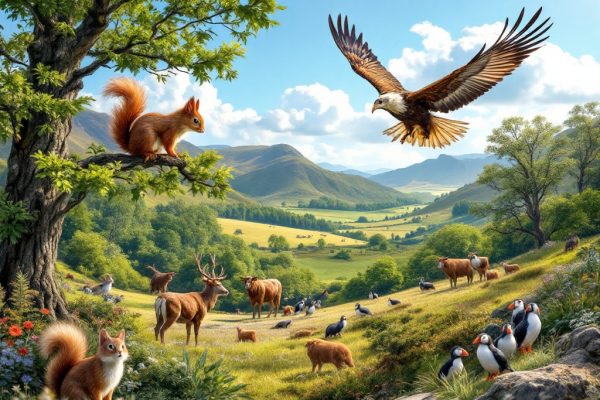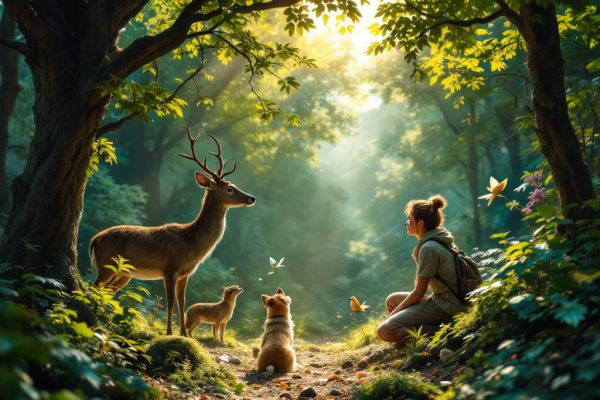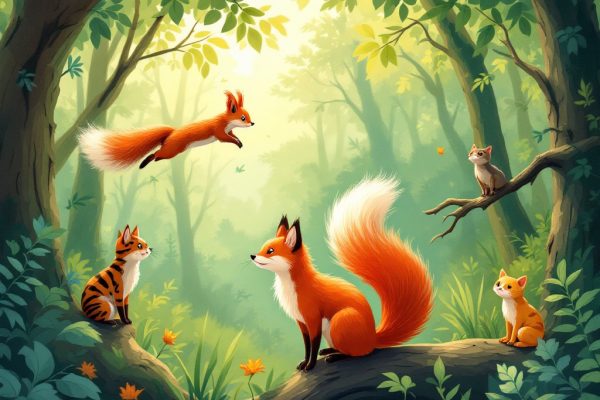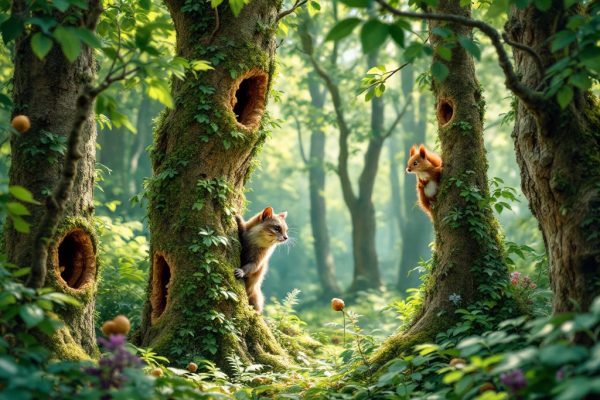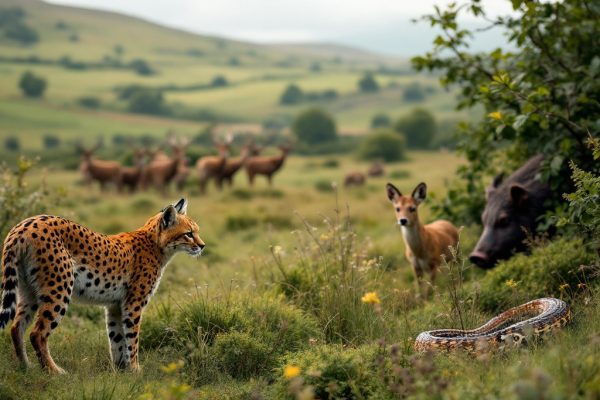Sounds of Lothian Wild Animals You Should Be Aware Of
Discover the vibrant symphony of Lothian’s wildlife! From the melodic calls of robins and song thrushes to the rustling of hedgehogs and the majestic roar of red deer stags, a world of unique sounds awaits. Learning these calls not only enriches your nature experience but also promotes safety by helping you identify warning signals from dangerous animals like adders and wild boar. Explore the sounds of Lothian’s diverse ecosystem, from woodlands and coasts to the nocturnal chorus, and deepen your appreciation for nature. Start your sonic adventure now and enhance your next wildlife encounter!
Important information
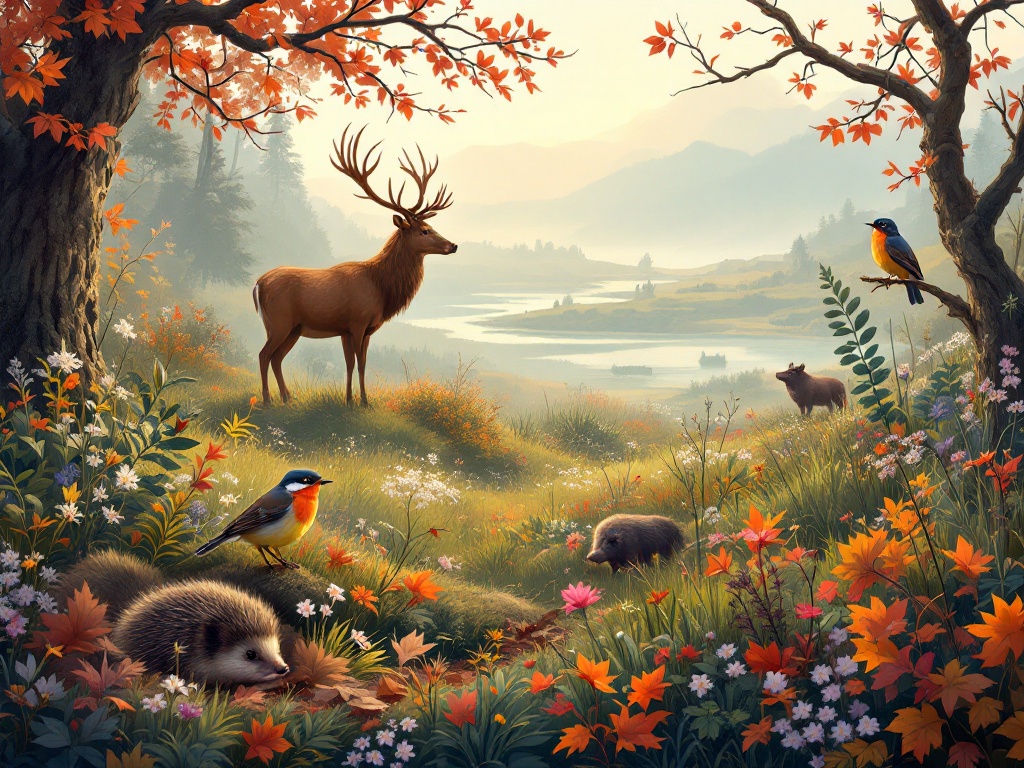
- Lothian has diverse wildlife, from birds like robins and owls to mammals like red deer and seals.
- Learning animal sounds improves wildlife experiences and safety, helping you identify and avoid danger (e.g., adders, wild boar).
- Use tools like recording apps and field guides, and consider guided walks to enhance your learning. Observe pitch, rhythm, and context of sounds.
- Dawn and dusk are prime times for listening to wildlife, especially birds.
- Respect wildlife and their habitats. Keep a safe distance, avoid disturbing them, and report any injured animals to the Scottish SPCA.
Introduction to the Sounds of Lothian Wild Animals
Lothian’s diverse landscapes are alive with a symphony of wildlife sounds, offering a glimpse into the local ecosystem. Understanding these sounds not only enriches any nature experience but also promotes safety by helping you recognize warning calls and avoid dangerous encounters. It also cultivates a deeper appreciation for nature, inspiring conservation efforts.
Common Sounds
Familiar sounds include the melodious calls of robins and song thrushes, while the rustling of small mammals adds another dimension. Wetlands pulsate with the croaks of frogs.
Unique Sounds
Lothian’s soundscape is far richer, encompassing the nocturnal calls of owls, the bellowing of red deer stags during rutting season, and the rustling of hedgehogs in the undergrowth at night. Numerous songbirds also contribute their unique melodies to this vibrant chorus.
Listen Carefully
Pay close attention to the pitch, rhythm, and context of each sound to distinguish between species.
Use Helpful Tools
Recording apps and field guides are invaluable tools for matching sounds to specific animals.
Seek Expert Guidance
Local wildlife walks and workshops offer practical experience and expert guidance.
When identifying birds, concentrate on their distinctive calls and songs. The soaring melodies of skylarks are unmistakable, while blackbird alarm calls are sharp and urgent. Tawny owls have a characteristic “two-oo” call. Listening at different times of day, especially at dawn and dusk when birds are most active, reveals more about their behavior and breeding patterns.
Understanding Lothian’s Diverse Wildlife
Lothian’s diverse landscapes, ranging from coastlines and forests to moors and wetlands, provide habitats for a wide variety of wildlife. Red deer roam freely, while foxes and badgers find refuge within the varied terrain. Birdlife flourishes in abundance. However, climate change poses a significant threat to these habitats and their inhabitants. Rising sea levels endanger coastal regions, and changing weather patterns could disrupt delicate food chains. Protecting these ecosystems is crucial for the survival of Lothian’s rich biodiversity.
Importance of Recognizing Wild Animal Sounds
Experiencing Lothian’s wildlife becomes far more enriching when you recognize its unique sounds. This understanding deepens your appreciation of animal behavior and their habitats, making any wildlife encounter more rewarding. Recognizing these sounds also contributes to conservation efforts and enhances personal safety by alerting you to nearby animals, which can be crucial in certain situations.
Identifying Wild Animal Sounds in Lothian
Lothian’s diverse wildlife offers a symphony of sounds. Learning these calls makes identifying local creatures a rewarding experience.
Woodland Sounds
The robin’s warbling song is a familiar favorite. High above, a sharp whistle might reveal a kingfisher. In the forests, the Scottish crossbill’s distinctive “jip-jip-jip” call can be heard.
Birds of prey add their own unique voices. The golden eagle’s high-pitched yelp contrasts with the white-tailed eagle’s deep bark. The red kite’s mewing call is surprisingly cat-like. Spotting these majestic birds is a truly special experience.
Lothian’s forests also echo with mammal calls. During rutting season, the roar of a red deer stag is an unforgettable sound. The secretive Scottish wildcat spits and growls, while the red squirrel chatters a “chuk-chuk” alarm.
Coastal Sounds
The Lothian coast adds another dimension to this soundscape. Bottlenose dolphins click and whistle, while orcas communicate with a complex vocabulary of clicks, whistles, and pulsed calls. Grey seals add their barking and growling to the chorus.
Common Bird Calls: Robins, Scottish Crossbill, and Kingfishers
Robins fill the air with their cheerful, high-pitched warbles.
Scottish Crossbills offer a distinctive “jip-jip-jip”.
Kingfishers add their sharp, whistling “chee-kee”. Each bird species sings its own unique tune.
Birds of Prey Sounds: Golden Eagle, White Tailed Eagle, and Red Kite
Golden eagles pierce the air with high-pitched yelps, almost like piping calls.
White-tailed eagles have a deep, barking cry.
Red kites mew like a cat. Each species boasts its own unique vocalization.
Mammal Sounds: Red Deer, Scottish Wild Cat, and Red Squirrel
The echoing roars and growls of red deer stags resonate through the forests during the rutting season. Scottish wildcats, though elusive, possess a surprising vocal range, from meows and purrs to hisses reminiscent of domestic cats, yet also including calls unique to their kind. The much more loquacious red squirrels chatter constantly, punctuating their conversations with a sharp “chuk-chuk” alarm call whenever danger is near.
Marine Wildlife Sounds: Bottlenose Dolphin, Orca, and Grey Seal
Bottlenose dolphins use clicks and whistles for navigation and communication.
Orcas employ a broader vocal range, incorporating clicks, whistles, and pulsed calls for both hunting and socializing.
Grey seals communicate through barks, growls, and clicks.
Nocturnal Wildlife Sounds in Lothian
Lothian nights pulse with a symphony of sounds. A barn owl’s chilling screech might pierce the air, while bats fill the darkness with their high-pitched echolocation calls, searching for food and navigating their surroundings. Adding to this nocturnal chorus, pine martens chatter and badgers grunt, each contributing their unique voice to the vibrant soundscape.
Nighttime Bird Calls: Barn Owl and Bats
Barn owls are famous for their haunting screeches, but they hunt differently than bats. Bats use echolocation, emitting high-pitched sounds and interpreting the echoes to navigate and find prey in darkness. These sounds are often too high for humans to hear.
Sounds of Nocturnal Mammals: Pine Marten and Badger
Pine martens are surprisingly vocal animals, their growls, chuckles, and screams echoing through the night. Badgers, conversely, communicate with a different repertoire of snuffles, grunts, and chattering sounds, also typically heard during their nocturnal wanderings.
Dangerous Animals and Their Sounds in Lothian
When threatened, adders emit a warning hiss.
Wild boar, on the other hand, employ a wider vocal range. They grunt, squeal, and even bark, especially when agitated or protecting their young.
Identifying Dangerous Animal Noises: Adder and Wild Boar
Adders, venomous snakes, hiss as a warning when threatened.
Wild boars, though typically shy, can become quite noisy, grunting and snorting, especially when agitated or protecting their young. Recognizing these sounds can help you avoid potential danger.
Wildlife Safety Tips and Responsible Watching
Maintain a safe distance from wildlife and never approach or feed them.
Store food securely to avoid attracting animals.
Avoid sudden movements or loud noises that could startle wildlife.
Stay aware of your surroundings and learn about animal behavior for a safer experience.
Respect wildlife habitats and leave no trace of your visit.
Report any injured or distressed animals to the Scottish SPCA.
Consider a guided wildlife tour to enhance your experience and learn more.

